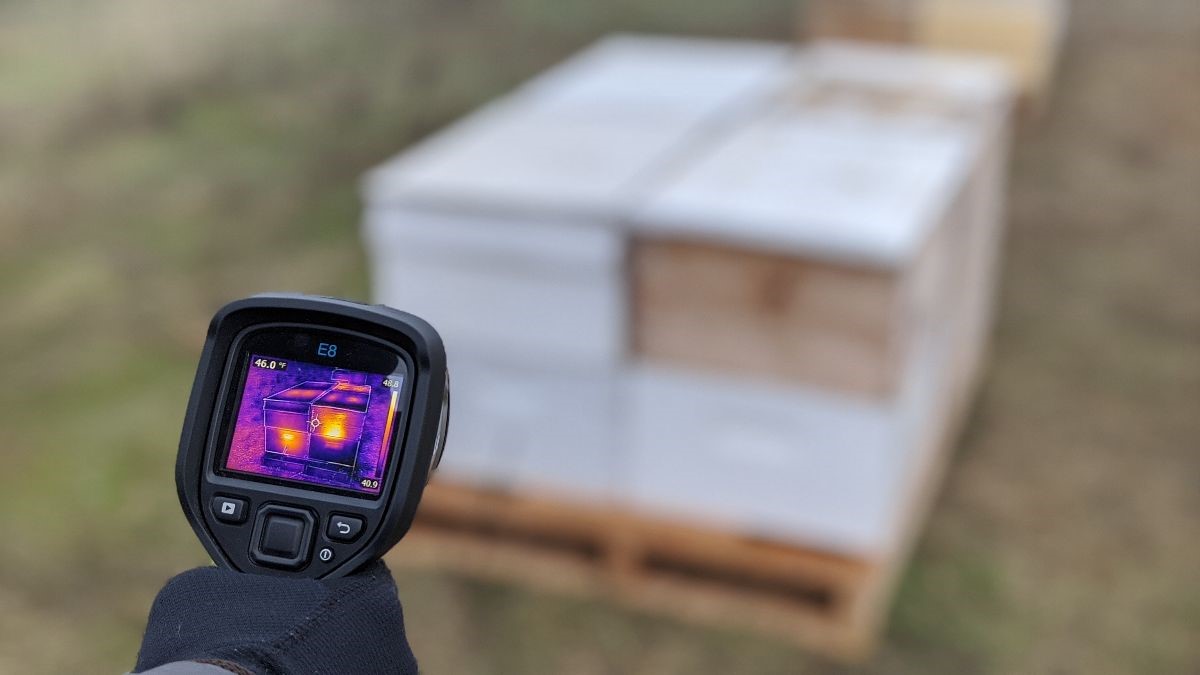The Bee Corp’s Data Sets Standard for Pollination

First peer-reviewed publication on Bee XML Journal measures effectiveness of The Bee Corp’s hive strength method
The Bee Corp is excited to announce the publication of a peer-reviewed study looking at the company’s hive strength assessment methodology in a new global repository of standardized data, Bee XML Journal. The Bee Corp CEO, Ellie Symes, and Appalachian State researcher, Joseph Cazier, co-authored a research publication examining various ways to measure pollination effectiveness.
The Bee Corp’s mission is to develop technology to help beekeepers maximize pollination revenue per hive and help growers reduce cost and optimize pollination quality. The Bee Corp offers Verifli, an infrared (IR) technology that measures a hive’s heat signature to determine colony size and pollination value. Farmers don’t always know what they are getting in terms of pollination effectiveness and beekeepers don’t always get full value for the services they provide — The Bee Corp is seeking to alleviate these industry gaps with Verifli.
The Bee XML Journal was created to provide researchers, apiculturists and bee enthusiasts with an archive that enables bee data sharing. The goal of the journal is to publish peer-reviewed research and data standards related to bees and beekeeping and to curate bee-related data from environments across the world. They have a three step approach to this data sharing procedure.
Build a standard by pooling common bee-related data, such as hive inspections, apiary management and apiary suitability
Decide on how to measure data by agreeing on one or more standard measures per item
Determine the technical architecture of storing, transmitting and analyzing data from machine to machine
Cazier, in collaboration with The Bee Corp, is forming a benchmark for pollination data. Their article reviews raw data collected by Verifli in conjunction with their pollination calculations, finishing with a presentation of the proposed Bee XML standard for this system.
“Standardizing the world’s bee data is critical to bringing modern tools and technologies to help protect our world’s pollinators,” says Cazier. “Machine Learning, Artificial Intelligence and even just basic reporting has tremendous potential to not only protect our pollinators, but to enhance the livelihood of beekeepers everywhere by keeping more bees alive, documenting the value they add to our society, optimizing pollination and eventually addressing honey traceability.”
Accurately assessing pollination allows beekeepers to receive the full value for their services while allowing farmers to make time-sensitive pollination management decisions sooner.
“In the beekeeping industry, information sharing and method standardization are not as common as you see in other industries,” says Symes. “We’re excited for the potential of Bee XML Journal to move the needle by becoming a hub for our collective knowledge about bees.”
The Bee Corp is excited to contribute to the Bee XML Journal as both companies’ missions align on data standardization. A big step in the bee industry, The Bee Corp is proud to contribute a piece of the puzzle that builds to larger innovation. Symes and Cazier’s research aims to push the bee industry forward by encouraging collaboration and information sharing.
See the full publication here.
